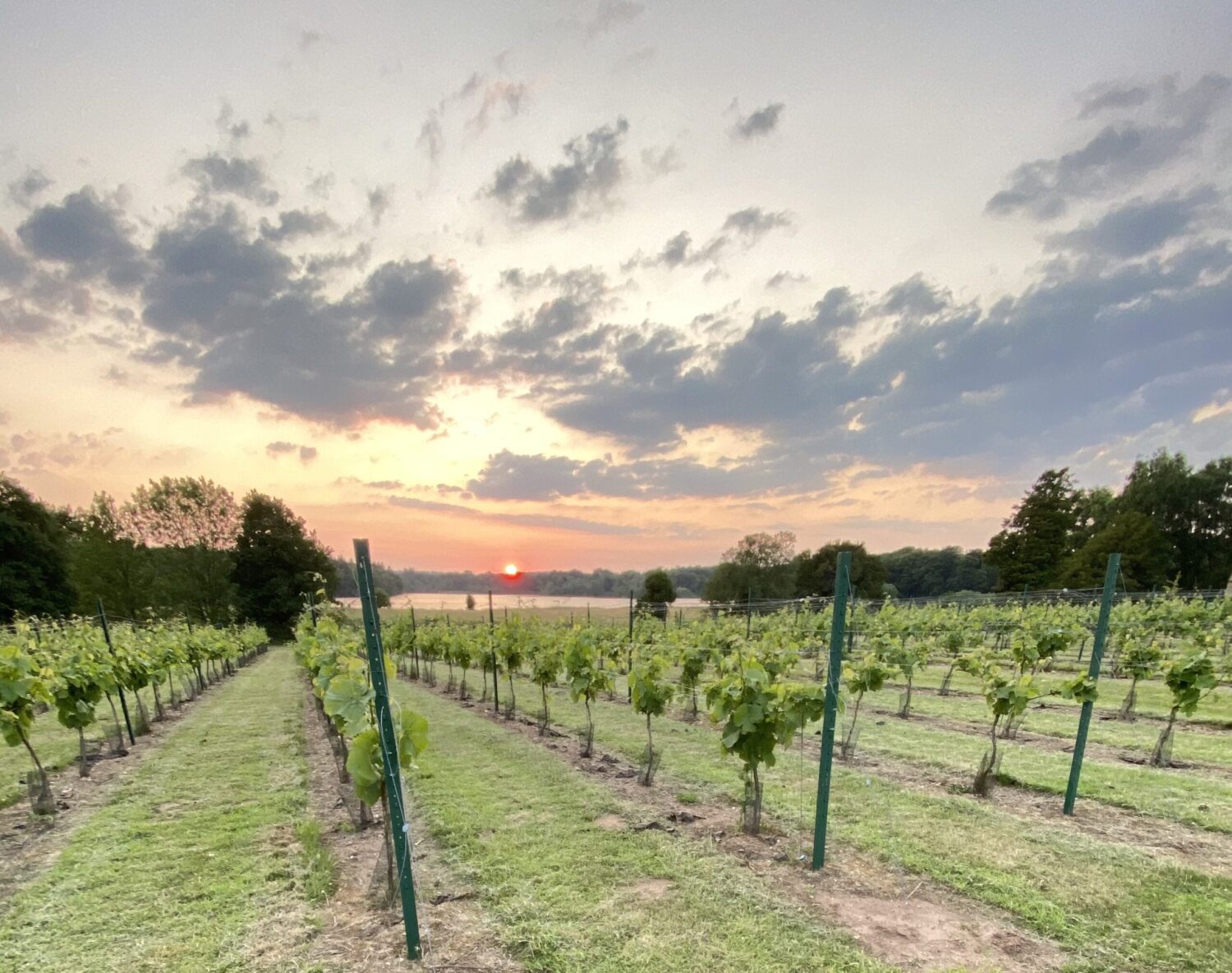Climate change is rapidly reshaping industries across the world, and one of the sectors seeing significant transformation is wine production. For a small vineyard in Shropshire, the effects of climate change are both challenging and exciting. England, traditionally known for its cooler climate, has long been a marginal region for wine growing. However, the recent rise in average temperatures and shifting weather patterns are beginning to change the landscape of English wine production in ways that are impossible to ignore.
The Changing Climate: Warmer Days and Longer Growing Seasons
Historically, the cooler British climate made it difficult to grow grapes that could produce high-quality wines. However, over the past few decades, climate change has brought warmer temperatures, creating a more favourable environment for viticulture. This shift has allowed vineyards, like those in Shropshire, to cultivate grape varieties that previously struggled to ripen.
With the growing season becoming longer, grapes now have more time to ripen, allowing for higher sugar content and more complex flavour profiles. Varieties that were once considered too risky for English vineyards, such as Pinot Noir and Chardonnay, are now thriving, leading to the production of more premium wines.
The Rise of New Grape Varieties in Shropshire
In Shropshire, vineyards are experimenting with different grape varieties to adapt to the changing climate. Varieties traditionally grown in warmer regions, such as the famous Pinot Gris and even some international varietals, are now being planted with great success. As the climate continues to warm, these varieties are able to achieve better ripeness and develop richer flavours, making them ideal for English wine production.
The benefits are two-fold for small vineyards in Shropshire. Not only does the warmer climate enable the production of higher-quality wines, but it also opens up opportunities for English wines to gain more recognition on the international stage. Shropshire, with its rolling hills and unique terroir, is becoming an increasingly desirable location for winemaking.
The Challenges: Unpredictable Weather and Extreme Events
While the warmer weather has brought some benefits, it also presents challenges. Extreme weather events such as unpredictable rainfall, droughts, and late frosts are becoming more common. These weather extremes can have a dramatic impact on the health of the vines, grape yields, and ultimately the quality of the wine.
For vineyards in Shropshire, these weather fluctuations mean that vineyard management practices must be adjusted frequently. For example, late frosts can damage young vines, and droughts can limit water supply, making irrigation systems more essential. These unpredictable weather events also make harvest timing more critical, as grapes need to be picked at just the right moment to preserve their flavour and balance.
Sustainable Practices: Adapting to the New Normal
As the climate continues to change, sustainability has become an even more crucial focus for vineyards. In Shropshire, many small vineyards are embracing eco-friendly practices to adapt to the shifting climate while minimising their carbon footprint. Techniques such as organic farming, rainwater harvesting, and the use of renewable energy sources are becoming increasingly popular among local vineyards.
In addition, adopting sustainable practices can help mitigate some of the risks posed by climate change. For example, drought-resistant grape varieties are being planted, and soil health is being prioritised to ensure that vines can better withstand extreme weather conditions. Moreover, reducing the use of pesticides and fertilisers helps improve biodiversity and soil health, contributing to the long-term viability of the vineyard.
A Bright Future for English Wine
Despite the challenges posed by climate change, the future of English wine production looks promising, especially for smaller vineyards in areas like Shropshire. With the ability to grow new, exciting grape varieties and the growing demand for premium English wines, the industry is poised for continued growth. As long as vineyards remain adaptable and committed to sustainable practices, they can continue to produce high-quality wines that rival those from more traditional wine regions.
Shropshire’s unique terroir, combined with the effects of climate change, presents a tremendous opportunity for the region to establish itself as a respected wine producer. As the English wine industry grows, so does its reputation, and Shropshire vineyards are in a prime position to take advantage of this transformation.
Final Thoughts
Climate change is transforming the landscape of wine production in England, and for small vineyards in Shropshire, this presents both challenges and exciting opportunities. Warmer temperatures, longer growing seasons, and the rise of new grape varieties are paving the way for higher-quality wines, while sustainable practices are helping to mitigate the risks associated with unpredictable weather patterns.
As English wine gains more recognition on the global stage, Shropshire’s unique terroir and innovative vineyard practices will continue to play a crucial role in this transformation. For vineyard owners and wine lovers alike, it’s an exciting time to witness the evolution of English wine production, and the future looks brighter than ever.
